


CAROLUS LINNAEUS (CARL von LINNÉ)
1707 -
xxxxxThe Swedish botanist Carolus Linnaeus was trained as a doctor, but devoted much of his life to the study of plant life and animals. His first major work, Systema naturae, published in 1735 and expanded by twelve editions, set out his simple, more workable system of classification. Having grouped together plants which had shared characteristics (such as the number and arrangement of petals), he used a binomial method to name them, giving a Latin or Latinized word to identify first the genus and then the particular species within that genus. This system was improved and extended in his second major work, Species plantarum of 1753, containing details of some 6,000 species, as well as information on insects and animals. This simple method was widely adopted throughout Europe. His other works included Methodus Sexualis, Philosophia Botanica, and one of his first publications, Flora Lapponica, written after a botanical expedition to Lapland. As we shall see (1767 G3a), further advances in natural history were to be made by the French naturalist Georges Buffon.
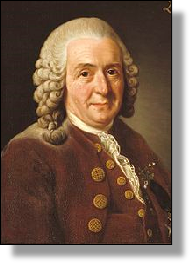 xxxxxLinnaeus was born in Rashult in Smaland,
Sweden, the son of a pastor. He was fascinated with plant life from an
early age, and was fittingly dubbed "the little botanist", but on
leaving school he chose to study medicine. He attended the
universities of Lund and Uppsala, and made good progress, but he
continued his interest in botany. Indeed, such promise did he show in
this subject, that in 1732 he was chosen by the Uppsala Academy of
Sciences to lead a botanical expedition to Lapland. On his return, he
settled at Heemstede in Holland for a short while, and it was during
this period, 1735-
xxxxxLinnaeus was born in Rashult in Smaland,
Sweden, the son of a pastor. He was fascinated with plant life from an
early age, and was fittingly dubbed "the little botanist", but on
leaving school he chose to study medicine. He attended the
universities of Lund and Uppsala, and made good progress, but he
continued his interest in botany. Indeed, such promise did he show in
this subject, that in 1732 he was chosen by the Uppsala Academy of
Sciences to lead a botanical expedition to Lapland. On his return, he
settled at Heemstede in Holland for a short while, and it was during
this period, 1735-
xxxxxAll these works served to enhance his reputation, but Systema naturae (System of Nature) was important, above all, for providing a much clearer and workable system of classification. It grouped together plants which had shared characteristics (such as the number and arrangement of flower parts) and it simplified the method of naming both plants and animals by using a Latin or Latinized word to identify the genus, and then a second word to distinguish the particular species. Thus in the case of the daisy, the name of the genus came first, Bellis, followed by perennis, to identify the species within that genus. If the plant was discovered by a particular person, then his or her name was added, as in Bellis perennis Linnaeus.
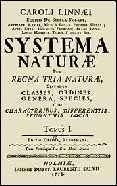 xxxxxGiven the chaotic arrangement then existing
in the classification of plant and animal life, this method was
welcomed and widely adopted. Systema naturae
itself ran to twelve editions, and by the tenth, published in 1758,
was made up of a number of volumes, each containing a wealth of
information on insects and humans, as well as plant life. In the
meantime, his Species plantarum of 1753
contained detailed descriptions of some 6,000 species, and refined the
binomial method by using a "sexual system" of identification, based on
the number of stamens and styles.
xxxxxGiven the chaotic arrangement then existing
in the classification of plant and animal life, this method was
welcomed and widely adopted. Systema naturae
itself ran to twelve editions, and by the tenth, published in 1758,
was made up of a number of volumes, each containing a wealth of
information on insects and humans, as well as plant life. In the
meantime, his Species plantarum of 1753
contained detailed descriptions of some 6,000 species, and refined the
binomial method by using a "sexual system" of identification, based on
the number of stamens and styles.
xxxxxDespite his heavy work load, in 1736 he paid a visit to England and met the naturalist Sir Hans Sloane. He then journeyed to Paris where he struck up a friendship with the three French botanists of repute, the Jussieu brothers Antoine, Bernard and Joseph. In 1738 he settled in Stockholm and worked as a physician. He established a thriving practice, and in 1741 was appointed professor of medicine at Uppsala University, 45 miles north of the capital. True to his first love however, the following year he resigned and took up the chair of botany! Later works included a study of Sweden's flora and fauna, Hortus Upsaliensis of 1748, and Philosophia Botanica, published three years later. For his outstanding service to biology, he was knighted by the Swedish government in 1761 and he then reverted to his name at birth, Carl von Linné. He died in January 1778, and was buried in the 15th century cathedral at Uppsala.
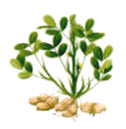 xxxxxInxcompiling his
work Linnaeus is likely to have been assisted by the works of three
earlier botanists: the Italian Andrea Cesalpino (1524-
xxxxxInxcompiling his
work Linnaeus is likely to have been assisted by the works of three
earlier botanists: the Italian Andrea Cesalpino (1524-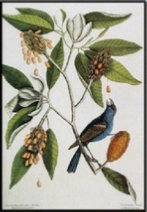 completed a sixteen-
completed a sixteen-
xxxxxIncidentally,
in 1783 the English botanist James Edward
Smith (1759-
xxxxx…… In adopting the binomial method of classification, it was Linnaeus who coined the term Homo sapiens (Wise Man) and Theobroma cacao (chocolate, food of the Gods!). He was also responsible for describing the American Indian as "Red". ……
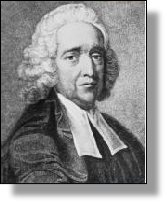
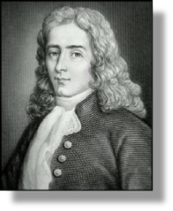 xxxxx…… Two
other natural scientists at this time deserve a mention. ThexFrenchman René
Antoine Réaumur (1683-
xxxxx…… Two
other natural scientists at this time deserve a mention. ThexFrenchman René
Antoine Réaumur (1683-
G2-
Acknowledgements
Linnaeus: by the
Swedish portrait painter Alexander Roskin (1718-


